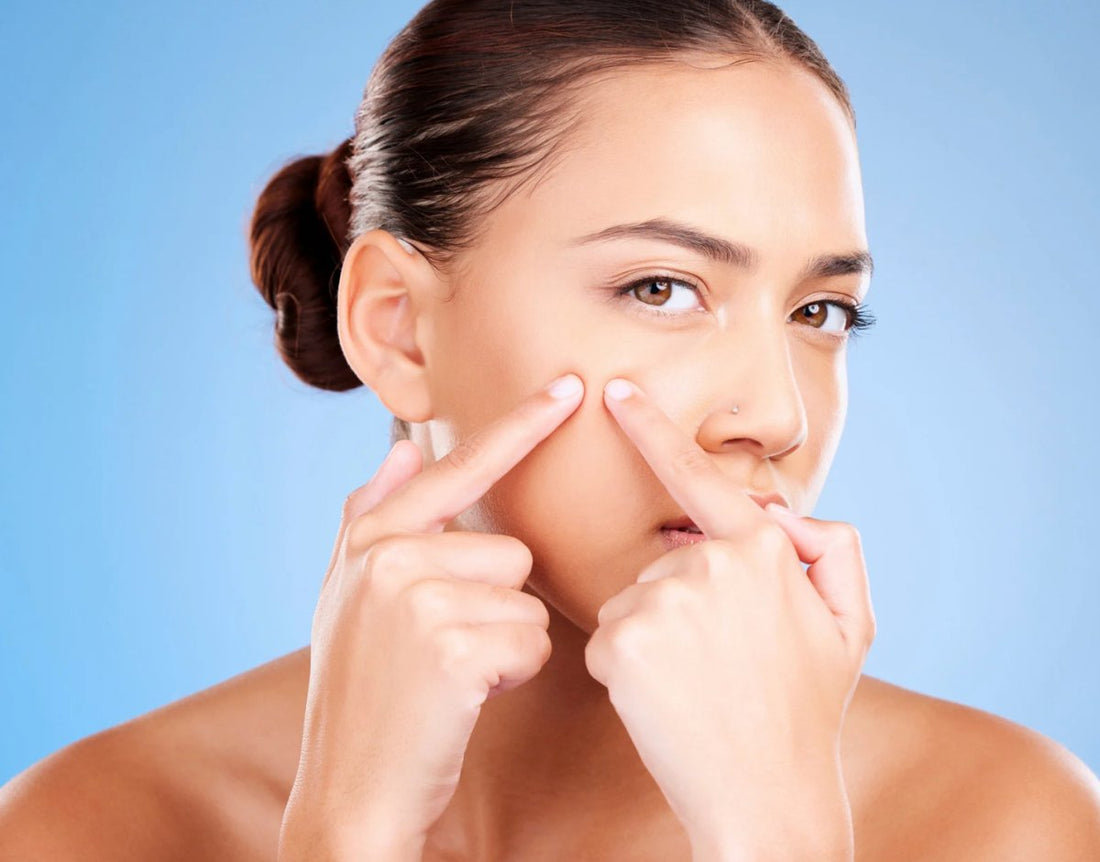Few things are as frustrating as dealing with breakouts. They always seem to pop up at the worst possible moments. (Is there ever a good time though?) These pesky blemishes can feel like they linger forever, and they often leave behind stubborn discoloration and scars.
The satisfaction from picking and squeezing is nearly impossible to resist, but unfortunately only makes them last longer, more likely to come back in the same spot, and more likely to scar. Fortunately, there are new insights into acne management that might just be the game-changer you need to get and maintain clear, acne-free skin.
Myths Busted:
Myth 1: Acne is caused by eating greasy foods.
Greasy foods are not the main culprit. For the longest time, we had no idea about the effect of food on acne. However, we now know that certain foods—particularly highly processed foods and foods high in simple sugars—can exacerbate acne by increasing inflammation.
Fact: If you are prone to acne, and medications are not working, try dropping dairy (like cow’s milk and cheese) from your diet as the proteins found in dairy could be an issue. Low fat or no-fat products will not make a difference in this case. Sheep and goat-milk based products are not in the same category and seem to be fine. Also, opt for foods high in antioxidants, such as those found in a whole-food, plant-based diet, as much as possible and grass-fed/finished meats.
Myth 2: Using rubbing alcohol will help dry out pimples.
This is not only a myth but also a dangerous one. Rubbing alcohol can irritate and dry out your skin without having any effect on the bacteria (C. acnes) related to acne. It also removes water from your skin, promoting increased oil production, and knocks out other bacteria which could be helping to keep the C. acnes under control, which may worsen your acne in the long run.
Fact: Instead, use salicylic acid or benzoyl peroxide-based cleansers and gentle spot treatments to help treat individual spots without drying out or stripping your skin. The earlier you spot-treat the better.
Myth 3: Acne is entirely due to bacteria.
While there is a bacterial component to acne, the bacteria (C. acnes) may also have benefits for your skin and is an integral part of your skin’s microbiome. Research shows that there are different strains of C. acnes, some of which are better for your skin than others.
Fact: In the future, we may even be doing C. acnes “transplants” using the better strains to try to take over and knock out the more inflammatory strains of the bacteria.
The Takeaway:
Understanding acne is the first step towards effectively managing it. By debunking these common myths and focusing on maintaining a healthy skin biome, you can take control of your skin health. Remember, achieving clear skin is an ongoing journey, and with the right information and tools, you can make significant progress.
Some of my favorite acne products:




![[The Science ] of Longevity: A Skin Focused Approach](http://dorisdaymd.com/cdn/shop/articles/Longevity3-9658695.jpg?v=1765451344)
![[Q&A Session] How Can I Regain Lost Collagen?](http://dorisdaymd.com/cdn/shop/articles/blog_collagen-129369-9354398_e967da1d-cb0e-4086-8c0d-714e0114968f-6680265.jpg?v=1763048229)
